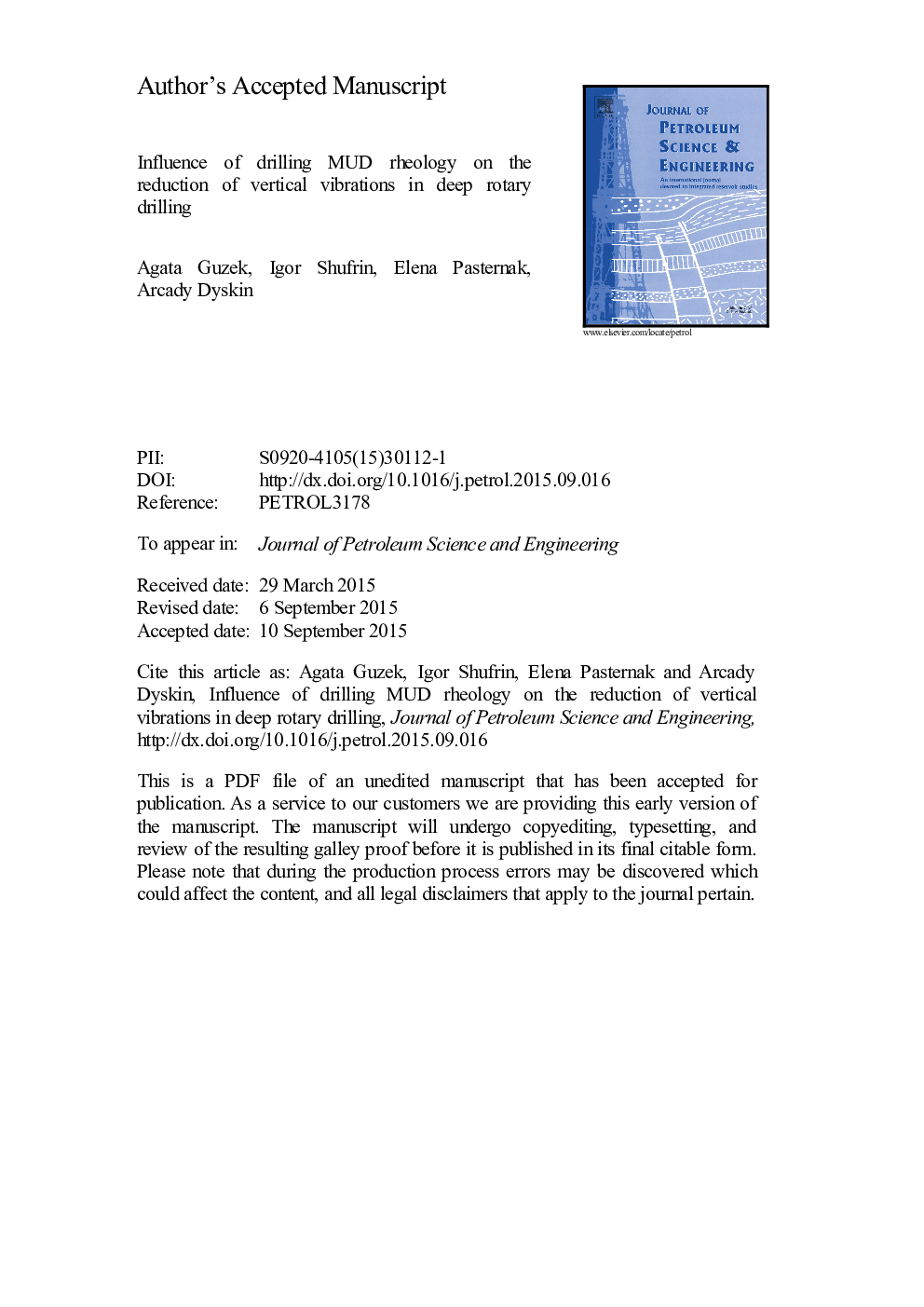| Article ID | Journal | Published Year | Pages | File Type |
|---|---|---|---|---|
| 8126424 | Journal of Petroleum Science and Engineering | 2015 | 25 Pages |
Abstract
Vertical vibrations in drilling (chatter) can be reduced by the viscous damping associated with the mud rheology. In previous studies, the effect of damping was modelled assuming that the drilling fluid is Newtonian. However, non-Newtonian shear-thinning muds are beneficial for the drilling process. In this study, we investigate the influence of the non-Newtonian mud rheology on the vertical drill bit vibrations using two different non-Newtonian rheology models: Herschel-Bulkley and Casson. In modelling the vibrations, we assume that the stiffness of the rock is much greater than the stiffness of the drill string, which corresponds to deep boreholes. This allows the use of the concept of impact oscillator, whereby the rock stiffness is assumed infinite, such that the vertical oscillations are associated with the drill bit detachment. The driving force for the oscillations is the periodic drill bit bouncing caused by impact of the roughness of the borehole floor. Parameters of the rheology models required for the efficient reduction of chatter have been determined. It has been established that with the muds used currently in the industry, a significant reduction of chatter cannot be achieved. Furthermore, the desirability of the shear-thinning behaviour in muds might limit the scope for a vibration-damping mud design.
Related Topics
Physical Sciences and Engineering
Earth and Planetary Sciences
Economic Geology
Authors
Agata Guzek, Igor Shufrin, Elena Pasternak, Arcady V. Dyskin,
